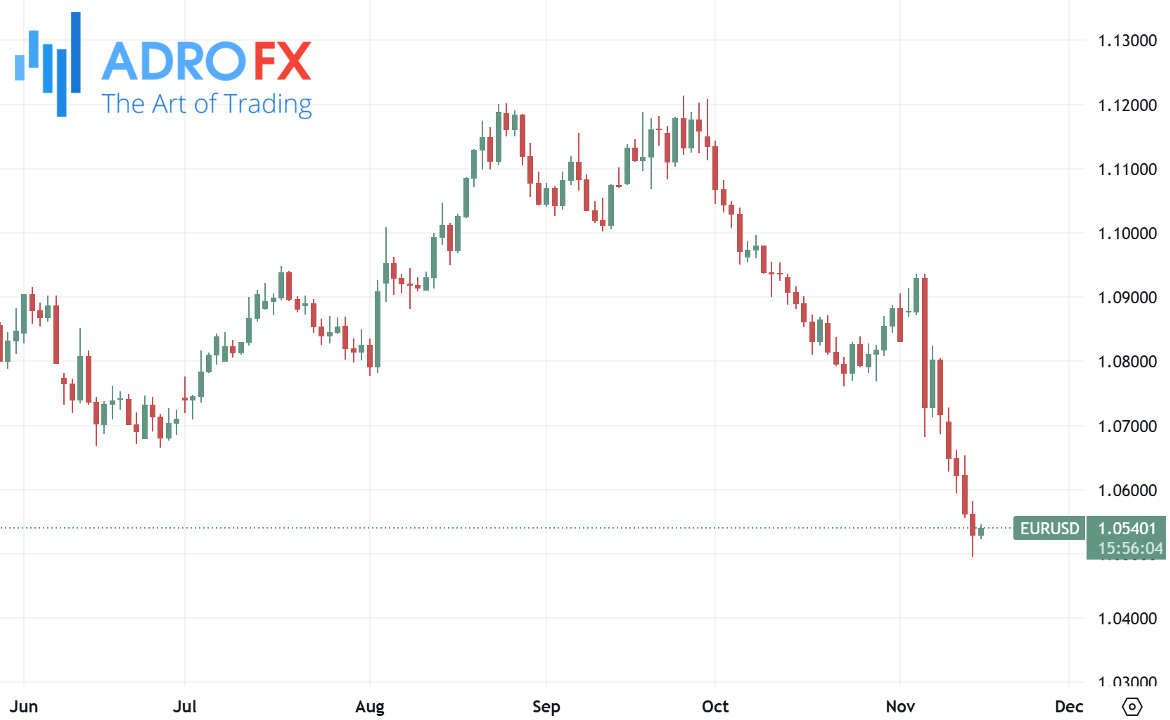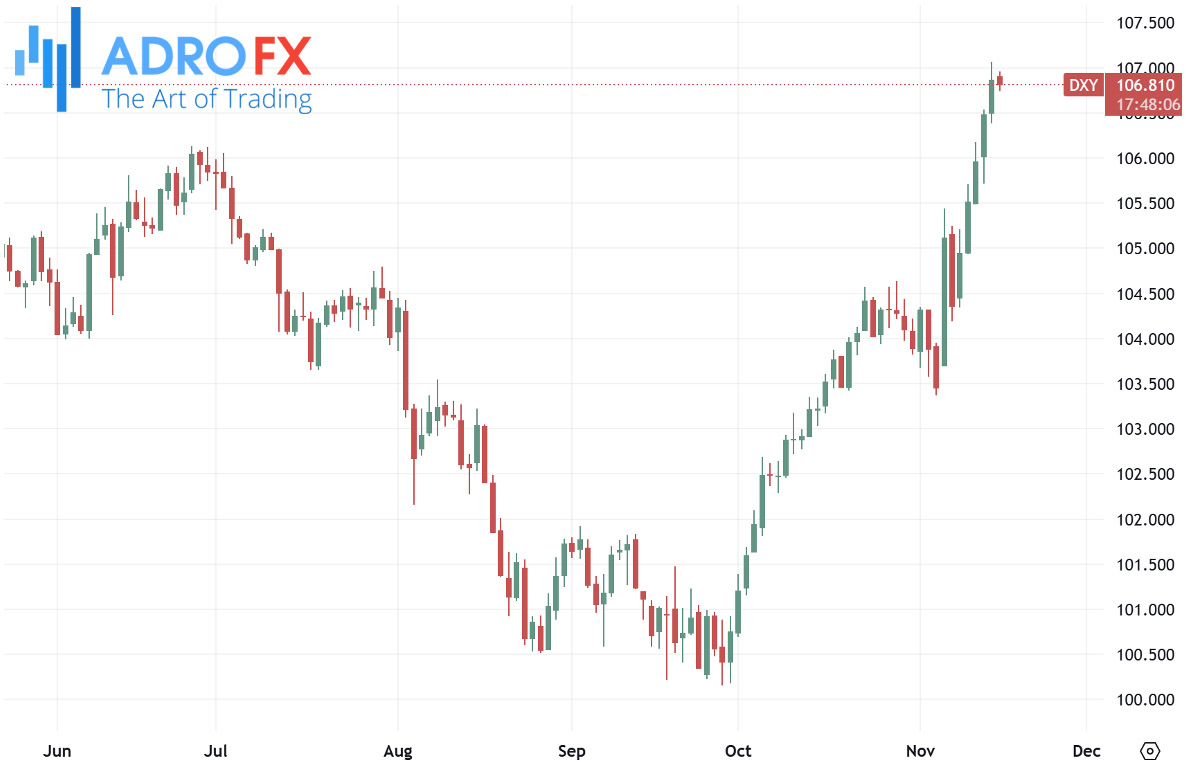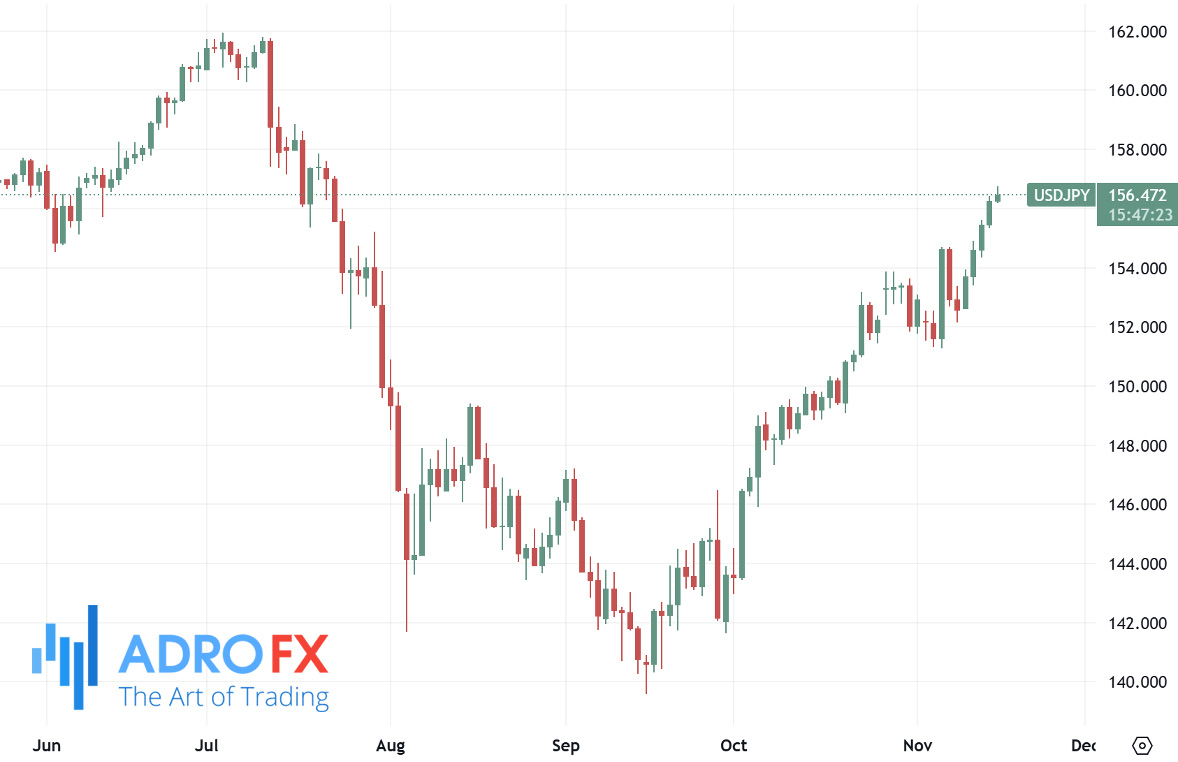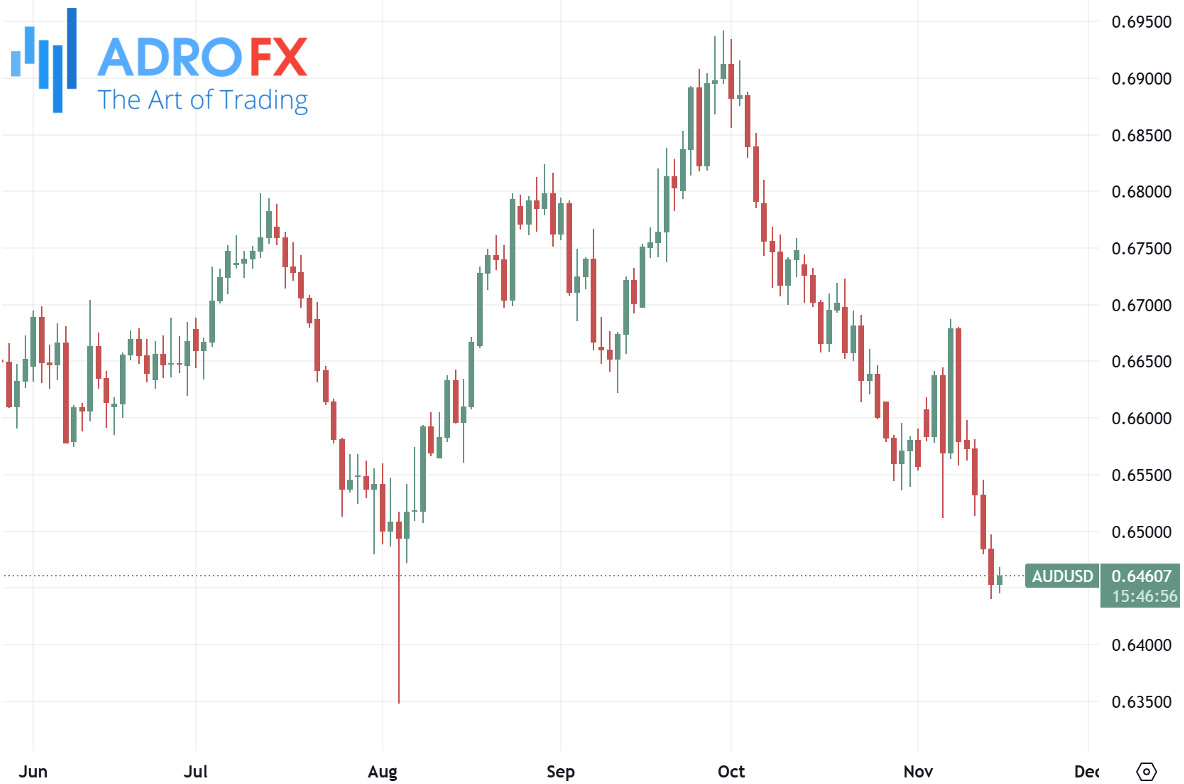Markets Dip as Fed Signals Cautious Approach; Disney Surges, Cisco Drops Amid Mixed Earnings | Daily Market Analysis

Key events:
- UK - GDP (MoM) (Sep)
- UK - GDP (QoQ) (Q3)
- USA - Core Retail Sales (MoM) (Oct)
- USA - Retail Sales (MoM) (Oct)
The S&P 500 took a downturn on Thursday as Federal Reserve Chair Jerome Powell’s comments suggested that the Fed is in no hurry to reduce interest rates. Powell signaled a careful approach to monetary policy, indicating that the Fed would continue to assess the economic environment before making any significant rate cuts. The Dow Jones Industrial Average fell by 207 points, or 0.5%, while both the S&P 500 and the NASDAQ Composite dropped by 0.6%.

On the corporate front, Walt Disney was a standout, with its stock rising by 6% after the entertainment conglomerate reported stronger-than-expected earnings and revenue for the fourth quarter. The company’s streaming division, in particular, showed impressive growth, powering a 14% increase in Disney’s overall revenue. This positive performance in streaming and content production was seen as a critical factor driving Disney’s financial rebound.
In contrast, Cisco Systems faced a decline, with its shares falling by 2%. Cisco reported a reserved full-year outlook, accompanied by its fourth consecutive quarter of revenue declines. The company’s struggles reflect ongoing challenges in the networking equipment industry as companies evaluate spending amid broader economic uncertainties. While Cisco has been making strides in diversifying its business with more focus on software and cybersecurity services, weak demand in its core networking segment has weighed on its overall performance.
In the foreign exchange market, the EUR/USD pair saw a rebound, trading around 1.0540 in the Asian session on Friday, breaking a five-day losing streak. This recovery in the euro is attributed to a correction in the US Dollar following Powell’s statements, which reassured markets that the Fed’s rate adjustments would be gradual. Powell’s recognition of the US economy’s "remarkably good" performance implies that the Fed may not need to aggressively cut rates, which had previously pushed the dollar higher.

The latest data from the US also factored into the currency market dynamics. The Producer Price Index (PPI) in the US increased by 2.4% year-over-year in October, up from a revised 1.9% in September and surpassing market expectations of 2.3%. Additionally, the Core PPI, which excludes food and energy prices, rose by 3.1% year-over-year, slightly above the expected 3.0%. These figures suggest that inflationary pressures are moderating but remain significant, supporting a cautious stance from the Fed on future rate cuts.
The US Dollar Index, which tracks the dollar’s strength against a basket of six major currencies, retreated from a yearly high of 107.06 reached on Thursday, settling around 106.80. This pullback is partly due to Powell’s comments, which dampened some of the dollar’s recent momentum.

In Europe, European Central Bank board member Isabel Schnabel commented on Thursday that interest rate adjustments should remain the ECB’s primary policy tool, suggesting that bond purchases and forward guidance be used sparingly. The ECB’s October Monetary Policy Meeting minutes revealed an increasing inclination to consider rate cuts in the future, though ECB officials continue to express caution over inflationary pressures, particularly driven by strong wage growth and weak productivity. These factors indicate the ECB’s hesitation in moving too quickly with rate cuts as it monitors economic data closely.
Turning to Asia, the Japanese Yen continued to decline against the US Dollar for a fifth consecutive session following Japan’s Q3 GDP data release on Friday. Japan’s preliminary GDP rose by 0.2% quarter-on-quarter, down from 0.5% in the previous quarter but in line with market expectations. The annualized growth rate of 0.9% was also slower than the previous quarter’s 2.2% but slightly above the forecast of 0.7%.

Japan’s Finance Minister, Katsunobu Kato, pledged on Friday to monitor foreign exchange markets closely and intervene as needed to stabilize fluctuations. Kato highlighted the need for exchange rates that reflect economic fundamentals, while Japan's Economy Minister, Ryosei Akazawa, emphasized the government’s commitment to supporting economic recovery through stable employment and wage growth. Akazawa, however, acknowledged potential downside risks from global markets and persistent volatility in capital markets.
Meanwhile, the Australian Dollar remained near three-month lows against the USD on Friday. Recent declines in the AUD/USD pair stemmed from mixed economic data from China and less dovish remarks from the Reserve Bank of Australia. RBA Governor Michele Bullock stated that current interest rates are sufficiently restrictive, signaling that the central bank intends to maintain its current policy stance as it assesses inflation trends.

In China, recent data showed that retail sales grew by 4.8% year-over-year in October, beating expectations, while industrial production rose by 5.3%, slightly below forecasts. The National Bureau of Statistics highlighted an improvement in consumer confidence and plans to implement further policy adjustments to support economic demand. These indicators suggest some resilience in China’s economy, which could influence Australia’s economic outlook due to their close trade ties.
The market's focus is now turning to the upcoming release of US October retail sales data on Friday, along with statements from Federal Reserve officials. On Thursday, Fed Chair Jerome Powell noted that the recent performance of the US economy has been "remarkably good," giving the Fed room to ease interest rates gradually.









